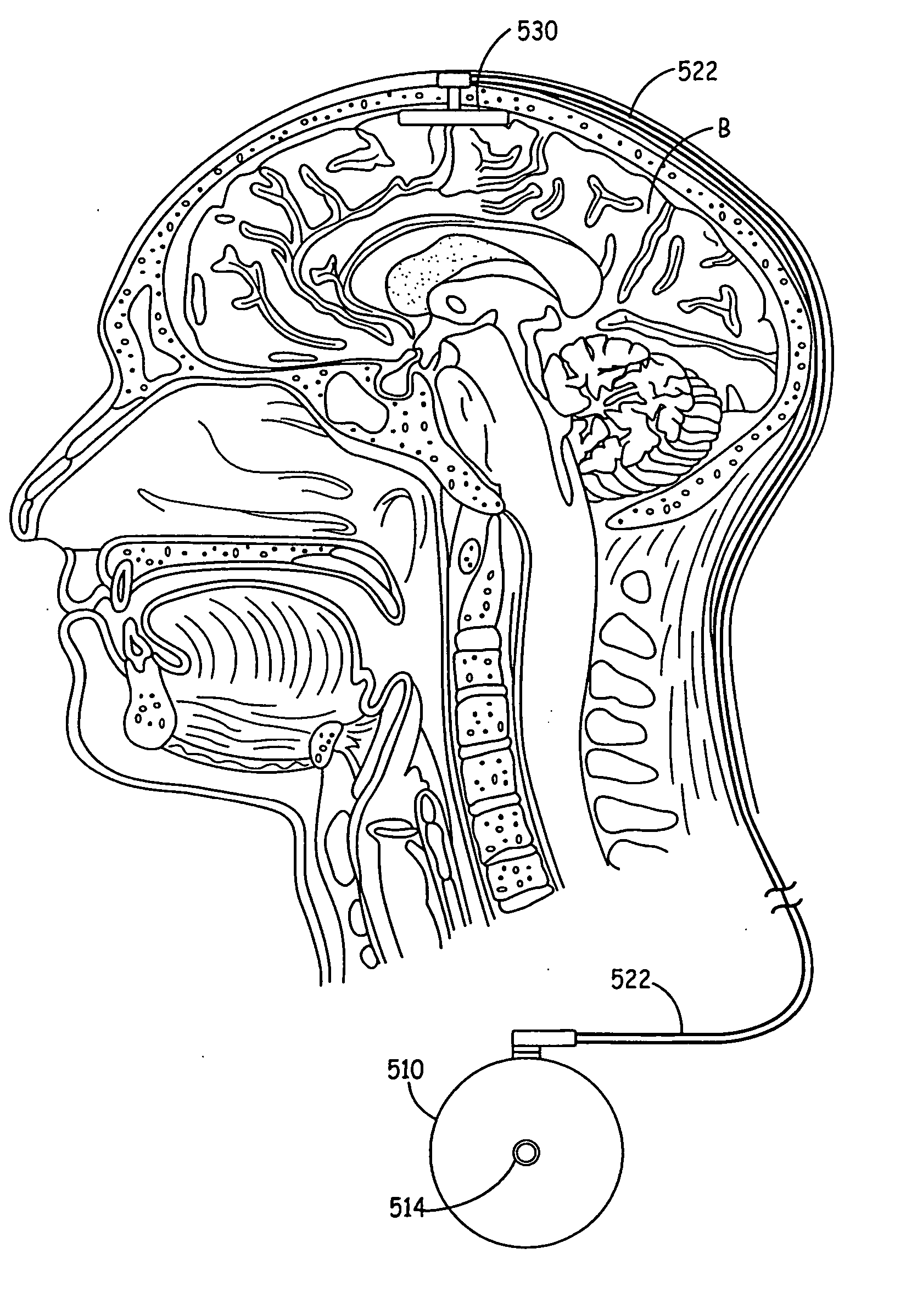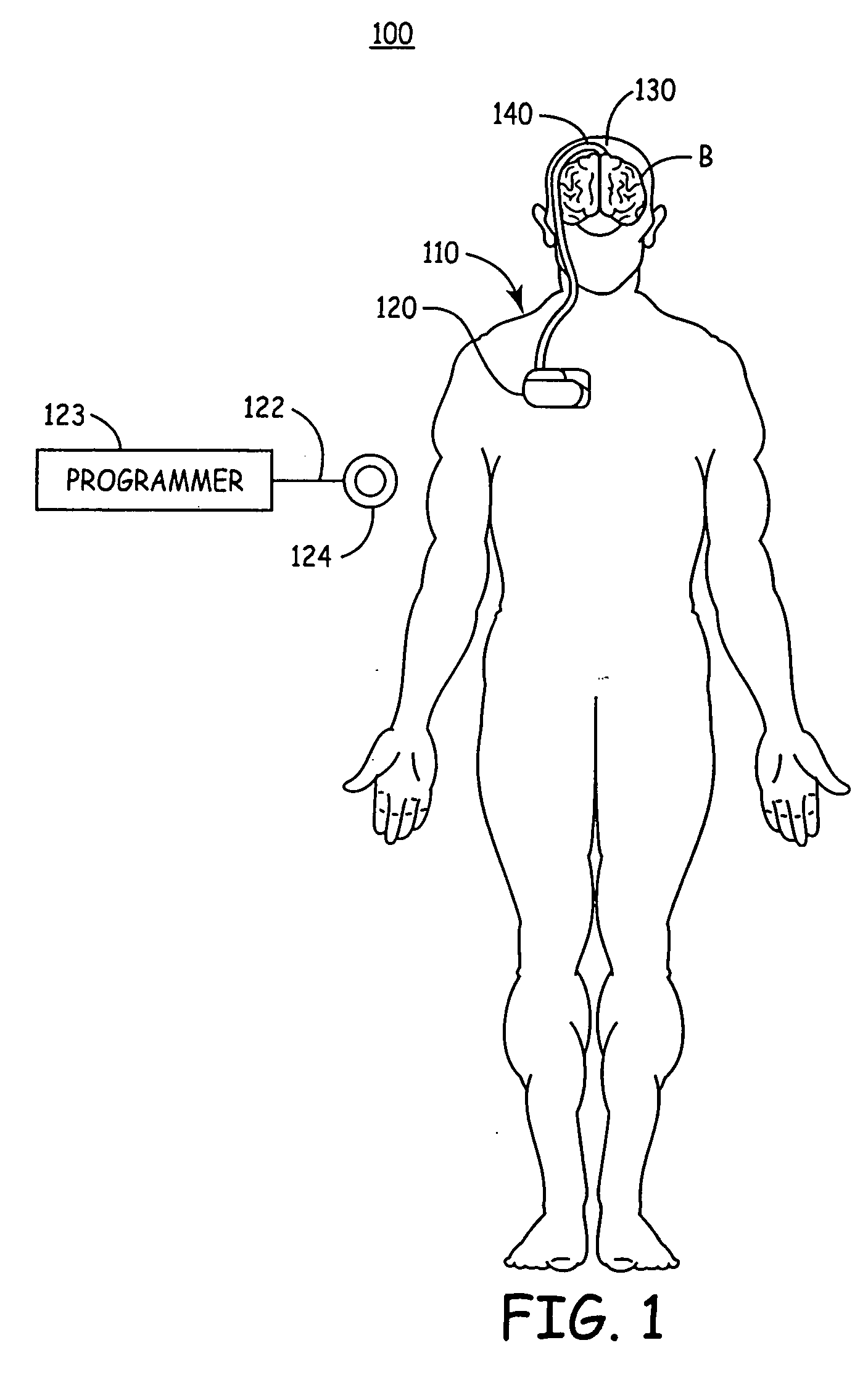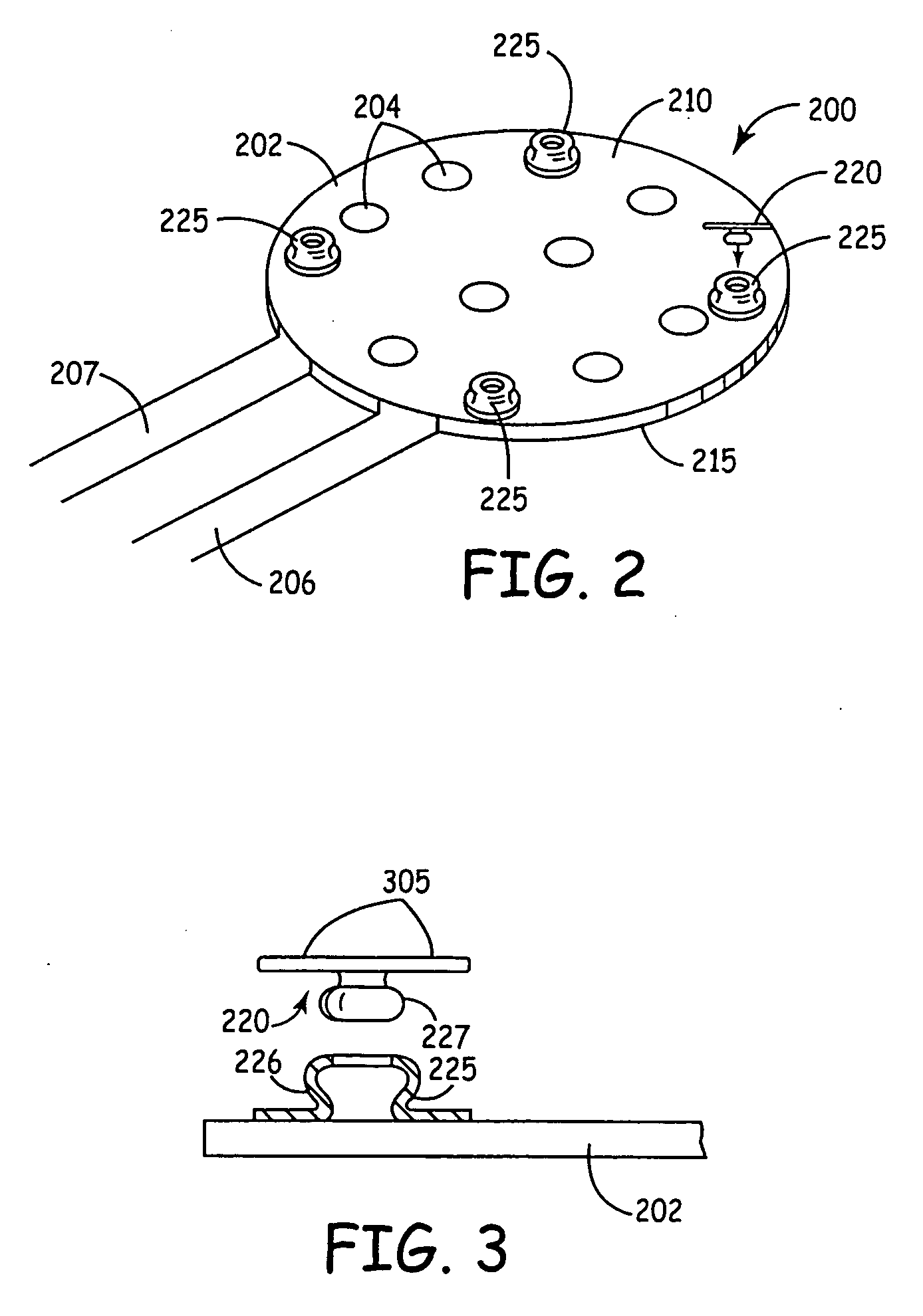Anchoring of a medical device component adjacent a dura of the brain or spinal cord
a technology of medical device and dura membrane, which is applied in the field of medical device components that can be attached to the dura membrane, can solve the problems of epilepsy, affecting the efficacy of the nervous system disorder being treated, and degrading life, and achieve the effect of facilitating the implantation of the medical device componen
- Summary
- Abstract
- Description
- Claims
- Application Information
AI Technical Summary
Benefits of technology
Problems solved by technology
Method used
Image
Examples
Embodiment Construction
[0032] The invention may be embodied in any implantable medical device system wherein a component of the system is to be implanted epidurally (between the dura and the skull) or subdurally (between the dura and the cortex) within a patient's head. In addition, the same principles may be applied to implant a medical device component either epidurally or subdurally relative to dura of the spinal cord. The medical device component may be any component of a medical device system including, for example, a therapy delivery element (electrical lead, paddle-style lead, electrode, catheter, etc.), a monitoring element to sense a neurological condition (recording electrode, sensor, etc.), and / or a therapy device (implantable pulse generator, pump, passive delivery device, etc.) to deliver treatment therapy to the therapy delivery element and to receive neurological signals from the monitoring element. As described herein, the medical device component to be implanted within the patient is anch...
PUM
 Login to View More
Login to View More Abstract
Description
Claims
Application Information
 Login to View More
Login to View More - R&D
- Intellectual Property
- Life Sciences
- Materials
- Tech Scout
- Unparalleled Data Quality
- Higher Quality Content
- 60% Fewer Hallucinations
Browse by: Latest US Patents, China's latest patents, Technical Efficacy Thesaurus, Application Domain, Technology Topic, Popular Technical Reports.
© 2025 PatSnap. All rights reserved.Legal|Privacy policy|Modern Slavery Act Transparency Statement|Sitemap|About US| Contact US: help@patsnap.com



